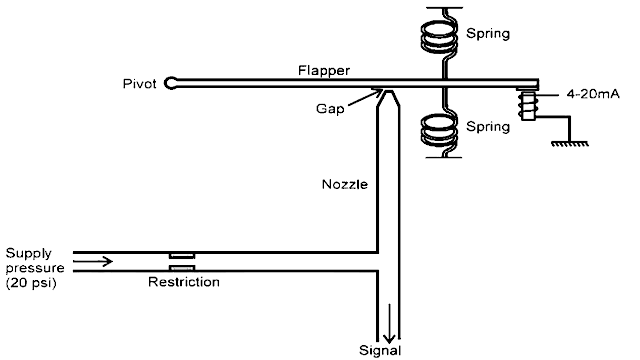Working Principle of Flapper Nozzle
Working Principle of Flapper Nozzle
Flapper Nozzle
Essentially, the flapper-nozzle is a fundamental component of pneumatic measurement, control and transmission systems, and the flapper-nozzle acts as a pneumatic secondary transducer, translating very small displacements into a pressure signal. It is a movable flat metal and is attached to the member whose displacement is to be detected. And it is placed in front of the nozzles in such a way as to cover or expose the nozzles and change the distance between them when moved. When the flapper is moved towards the nozzle, the distance between the nozzle and the flapper decreases. This increases the resistance to air escaping through the nozzle and also increases the pressure behind the nozzle. Once the flapper completely covers the nozzle, no air flows through the nozzle. Nozzle back pressure is maximum and same as supply air pressure. When the flapper is moved away from the nozzle, the distance between the nozzle and the flapper increases. The restriction to the exit of air through the nozzle is reduced and the pressure behind the nozzle is also reduced. Minimum value of nozzle back pressure is 2-3 psi.
Advantages of Flapper Nozzle
- Flapper Nozzle systems are easy to install, operate and maintain
- Flapper Nozzles are explosion-proof and can therefore be used in hazardous environments.
- The flapper-nozzle system produces a linear output of 3 to 15 psi, which falls within the industrial control pressure range.

Comments
Post a Comment